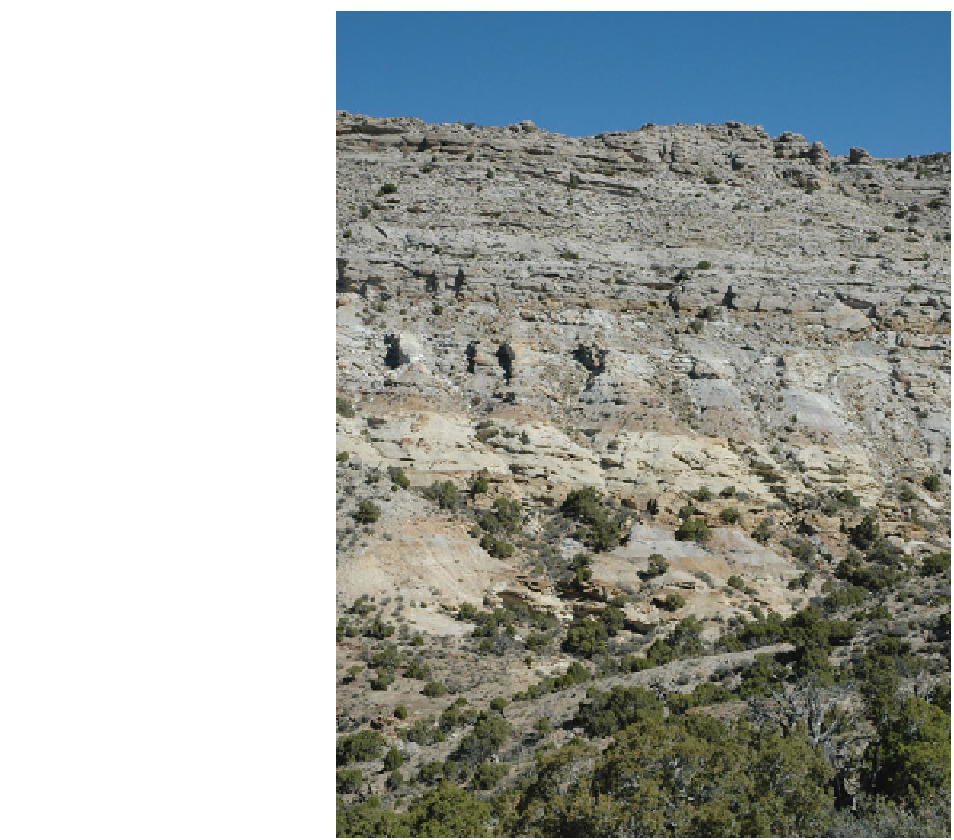Geology Reference
In-Depth Information
Fig. 17.14
The light and
rusty-colored sandstones and
mudstones of the Rusty
Member, Ericson Sandstone
occupy the lower half of the
photo. The white sandstones
(third way up photo), about
15 m thick, are interpreted as
inner estuary dune systems
(compound dunes with
bi-directional paleocurrents,
Martinsen et al.
1999
)
occupying a broad channel or
valley (white sand pinches
out beyond left margin of
photo). These sandstones
grade up into supratidal
mudstones and multiple
paleosol horizons, and then to
a second tidal unit of upper
fl ow-regime sandfl ats. The
upper third of the photo
shows the unconformity-
based Canyon Creek Member
fl uvial sandstones
deltas in the middle-estuarine zone (e.g. Dalrymple
et al.
1992
; Allen and Posamentier
1994
; Vis
2009
) .
These tidal bars form because tidal currents are stronger
in mixed-energy estuaries, compared to wave-dominated
estuaries, and thus able to rework the river-derived sedi-
ments in bayhead deltas into tidal bars.
Note that the above tidal bars are distinctly diffe-
rent from the outer-estuarine tidal bars described
below, in that they consist of river-derived sands,
muds and organic matter, in contrast with the marine
sediment supplied to the outer-estuarine tidal bars. A
Campanian example of a mixed-energy estuary that
developed in an incised valley is the middle portion of
the Chimney Rock Sandstone of the Rock Springs
Formation, exposed on the Utah/Wyoming border
(Plink-Bjorklund
2008
) . The inner-to-middle estua-
rine tidal bars in this interval characteristically occur
as elongate sandbodies (2-7 m thick and 1,000-
3,500 m long) that contain lateral accretion sets, with
bidirectional cross-stratifi ed and compound cross-
stratifi ed sandstones that contain single and double
mud drapes (Fig.
17.15
). These tidal bars occur land-
ward of the central basin of the estuary and are associ-
ated with bayhead delta deposits (Fig.
17.15
).
Outer estuary zones
of tide-dominated estuaries are
dominated by elongate tidal bars (Fig.
17.4a
) of greater
length and lateral extent than seen further landwards
within the narrower reaches of the estuaries (Dalrymple
and Choi
2007
). Tidal sands in an outer-estuary set-
ting have been identifi ed in the Hatfi eld Sandstone of

